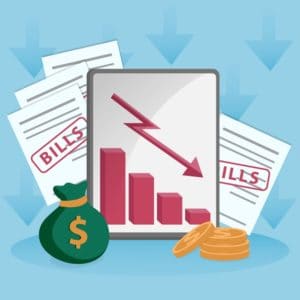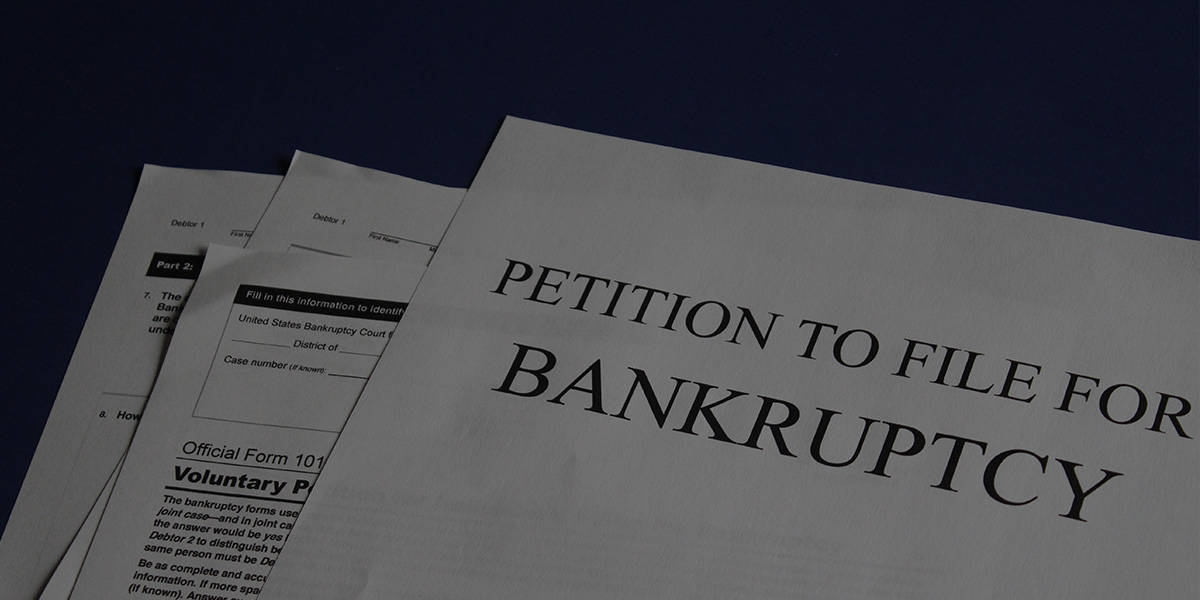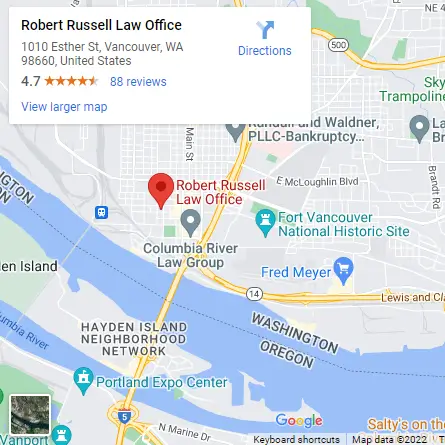If your finances have been unbearable and your debts have gotten the better of you, then you might want to consider filing for bankruptcy. There are many different bankruptcy types in the bankruptcy code; they are all written in different bankruptcy chapters and are named according to the bankruptcy chapter in which they are found.
The two main types of personal bankruptcy are called Chapter 7 bankruptcy and Chapter 13 bankruptcy. Chapter 7 bankruptcies are also called liquidation bankruptcy because it involves the liquidation of assets to pay for debts, followed by the discharging of most of the leftover debt.
On the other hand, Chapter 13 bankruptcies are also called the “wage earner’s plan” because it involves a restructuring of debts into a more feasible plan using the filer’s wages.
If you have any questions about the different types of bankruptcies, don’t hesitate to contact one of our bankruptcy attorneys at the Robert Russell Law Office. We are a Vancouver, WA bankruptcy law firm dedicated to helping all Washington residents get a fresh start.
1. Analyze Debt
The first step to filing any bankruptcy is to first take a step back and look at your debts. Identify and classify the sort of debts you have first. Doing so is the first step to identifying what type of bankruptcy you could file, and which one would be the best for you.
Secured and Priority Debts
Priority debts are debts that often carry the worst sanctions if left unpaid. This includes tax debts, child support, and alimony. Secured debts are debts that are protected by collateral, such as in mortgages and car loans. These two types of debts cannot be discharged.
Unsecured Debt
Unsecured debts are pretty much all your other debts including credit card debt and medical debt. Most of these are dischargeable, except for a few exceptions including student debt.
2. Identify Exemptions
 When filing for bankruptcy, a part of your assets will be liquidated to pay for your debts- these assets in question are your nonexempt assets which include non-essentials such as extra properties, expensive cars, and other valuable items.
When filing for bankruptcy, a part of your assets will be liquidated to pay for your debts- these assets in question are your nonexempt assets which include non-essentials such as extra properties, expensive cars, and other valuable items.
On the other hand, your exempt assets will be protected and safe from repossession. These are items that are essential to keep on making a living including your house, a modest car, and your clothes.
3. Confirm Eligibility
Some people are automatically eligible to file for a Chapter 7, these are people whose total household income is below the state median, veterans who acquired most debt while in active service, business owners whose debts are from running the business.
If you are not among the three listed above, you can still qualify to file for Chapter 7 if you pass the means test calculation. It tries to compute if you can file for Chapter 13 instead of Chapter 7. It will take your household’s income from the last six months, subtract necessary expenses, and see if there is enough money to pay off 25% of your debt and to pay for the fees associated with filing a Chapter 13.
Needless to say, eligibility rules for bankruptcies are state-specific. That is why it is best to consult with a Vancouver bankruptcy lawyer to better understand your eligibility and to know what type of bankruptcy is the best for you.
4. Redeem or Reaffirm Secured Debts
As mentioned a while ago, secured debts are not dischargeable because they are protected by collateral which can be seized if you are not current with your payments.
When filing for bankruptcy, you will have three options regarding your debt: redeem, reaffirm, surrender. Redeem means paying off the rest of the loan, reaffirm means continuing to pay for the debt as before while surrendering means giving your property back to your creditor.
5. Fill out Bankruptcy Forms
Bankruptcy forms typically vary by locality, so be sure to go to your local bankruptcy court and ask for the requirements and forms from there.
The forms will ask you about your properties, income, debt, expenses, and past transactions. You will also have to list in detail all the debts you have and to which creditors those debts are due.
Talk to us today if you have questions about bankruptcy forms and the bankruptcy process. As a Vancouver, Washington bankruptcy law firm, we are knowledgeable of the bankruptcy laws in the state and we are committed to helping you.
6. Credit Counseling Courses
Before actually submitting and filing your forms, you will have to attend credit counseling courses approved by the U.S. Trustee’s Office. These must be taken within 6 months before filing. At the end of it, you will get a certificate that you will have to submit along with your bankruptcy forms.
7. Filing Forms and Paying the Filing Fee
Once you have filed your bankruptcy forms and petition for bankruptcy, your bankruptcy case will officially be open. You may choose to submit all your forms at once, but in case of an emergency, you can submit some forms first followed by the rest of the required forms within 14 days.
Once your bankruptcy case commences, you are automatically under “automatic stay”, which is a bankruptcy protection policy that states that your lenders may no longer contact you to ask for payment. The first few instances are fine since they may not be made aware of the situation, but if they are still persistent, it is then considered a crime and you may file a case against them.
When you file your forms, you will also have to pay the filing fee. If you can’t file for it as a whole, you can ask the court to split it into four payments or have it waived entirely. This can only happen if your income is 150% of the federal poverty guidelines and if you don’t have enough money to pay for it even in installments.
8. Submitting Documents to Bankruptcy Trustee
The bankruptcy court will also assign to you a bankruptcy trustee. He will be responsible for validating the information in your forms using additional documents including paycheck stubs, bank statements, tax returns, etc. He will also be responsible for facilitating your bankruptcy filing.
9. Creditor’s Meeting
You will then have a meeting with your creditors and your bankruptcy trustee, although creditors very rarely attend these. In this meeting, your trustee will investigate your case further to check for fraud, and the possibility of converting your case into Chapter 13.
It is also in this meeting where your bankruptcy trustee will evaluate your assets and sort them as exempt and non-exempt before liquidating your non-exempt properties to be used to pay for your debt.
10. Objections
If you or your creditors have any objections, you must bring them up before your case is closed.
11. Settling Secured Debts
Before your case is closed, you will have to act on your secured debts according to the plan that you proposed. That is, if you made a plan to return your car, you must do so, otherwise, you must pay for the amount that you said you will pay.
12. Debtor Education Course
Right before getting your discharge, you will need to complete a debt education course. The course will teach you how to handle your finances better and how to rebuild your credit after filing for bankruptcy.
13. Discharge
Once all of that is done, congratulations! At this point, you have completed all the steps necessary to file for bankruptcy. All of your dischargeable debt will be eliminated at this point, and you will no longer be legally obligated to pay them, and your creditors may no longer contact you to initiate collections.
If you think filing for bankruptcy is your best option, don’t hesitate to contact us at Robert Russell Law Office. We will help you identify what type of bankruptcy is best for you, and we will help you in filing to help you get a fresh start free of insolvency!







